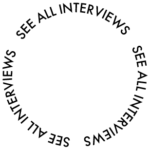HACKTIVISM IN PHYSICAL AND VIRTUAL SPACE
ROCH FOROWICZ
He is able to perceive a wide spectrum of social phenomena in the urban tissue. He instils some of his artistic interventions there. A lot of his works define hacktivism. With his alert and sensitive mind, he does not only scan physical or urban space, but studies digital reflexions and forms. He provokes and encourages us to reflect on the privacy of information society by placing mirrors of our reflections of industrial cameras, which track every step that we make. It turns invigilation mechanisms inside out. Among other things, he blurs the identity of digital face scans and offers a closer look at abstract digital objects so that our intense process of interpreting media boundaries could start. When most of us were enthusiastically creating Facebook accounts he was carefully observing how panopticism was entering more and more spaces in our lives, entwining around our social activities on the web.
He believes that the term ‘virtuality’ requires redefinition; he connects it with studies on perception and operating on the verge of… computer calculations of complex optical illusions. He was a curator of new media artists’ grassroots activities on the international arena. In addition, he can be called a poet of textures that are drawn from the architectural matter of the city, but also he is a promoter of mapping projections. Roch Forowicz tells us about his activities, shares valuable observations on perception and new media roles, and introduces us to his hacktivity.
In the English version we present selected and most interesting quotes from the interview.
ACTIVIST WEB HACKING AND PERCEPTION EXERCISES
I have been working on issues of panopticism and privacy in information societies since 2004. In those times, public space was changing dynamically in front of our eyes. Mechanisms like Big Data appeared on the Internet; they could collect and trade data about their consumers. I tried to hack different tools that were programmed to monitor urban and digital space. I have been using industrial cameras, infrared or face detecting software to create interactive audiovisual installations. My aim was to involve people in interaction and to draw their attention to the problem of surveillance. These activities were not fully legal, so I began to call it ‘hacktivism’, because I have annexed tools for a purpose other than what they were designed for: that is, for addressing the problem of panopticism, and not for public surveillance. At that time, I was cooperating with Panoptykon Foundation, which consisted of Katarzyna Szumieliewicz and her team. We successfully organized a few important exhibitions and conferences, where we were talking about the problem of surveillance culture, monitoring, and supervision of population, referring to Michel Foucault and Jeremy Bentham’s idea of panopticism.
INTERCEPTION I, R. Forowicz, source: the artist’s private gallery
I would rather call it an observation exercise than mind hacking, which is an extremely interesting issue, but I think that I am not even close to that area yet. The second such branch that has always been important to me have been activities related to illusion. Like simulation of optical phenomena using software for three-dimensional graphics. Or building tension between unusual image fragments and recipient’s perception. In ‘INTERCEPTION V’ it was possible to combine these interests – panopticism, illusion, and simulation. That work was about accessing illegally the CCTV system of the Frederic Chopin University of Music. Images were installed there – glassy, three-dimensional solids that were displayed like visualizations on the control screens of security guards supervising this space. Suddenly it turned out that ‘disturbances’ in the form of unspecified lumps began to appear on the monitors.
INTERCEPTION IV, R. Forowicz, source: the artist’s private gallery
TWO APPROACHES TOWARDS 3D PROJECTION MAPPING – SOCIAL INTERACTION SCREEN
In my opinion, there is no end to mapping development yet, although it has in the process advanced in some quite dangerous areas such as shows. I think it is a very good tool in artists’ hands. Firstly, because the image is reduced here to the scale of architecture. That makes it possible to carry out unusual interventions in urban space. Secondly, equipment becomes more and more perfect, and projectors with 30, 000 ANSI lumens allow you to turn an architectural object into a big screen. Krysztof Wodiczko concepts can be a good example of how to involve monumental projections in social activities. We know extremely interesting examples of strict visual and aesthetic searches: a team called AntiVJ tried to create monumental art objects with light and architecture. I still see limitless potential here. It is important to differentiate two pathways, when we just make the show or when we try to address some important issues. It is the same with video, movies, objects, and sculptures in public space. It is well known there are real gems among those artworks, but you must know how to find them.
I perceive mapping as a space for artistic expression that, as I have already mentioned, can transform architecture. It is beyond doubt that this tool can be used for addressing various issues associated with surveillance, lack of privacy in information society, or data processing. What comes to mind is Krzysztof Wieliczkos project created with Rafael Lozano-Hemmer, called Zoom Pavilon, in which images from industrial cameras were mapped across the gallery space. Software tracks down different anomalies in people’s behaviour, tensions between them, and compares movements in real time. Then the image is processed into aesthetic tissue. We must remember that mapping as a creative process has its origins in VJ. Even the software is often the same, for example Resolume Arena, which is a VJ software extended with an overlay that allows you to adjust the image to various solids or irregular surfaces, so that objects can become screens.Hence there is no doubt that the path mapping development took from clubs to galleries and architectural objects has been always in its DNA. Nevertheless, we must never forget about theatre scenography where mapping is widely used. To use traces that we leave behind, because that is what I think of when we talk about tracking in mapping, is undoubtedly an imprinted element of our privacy. A trace of our life, which is further processed with the help of various tools that allow us to create new value.
CURATOR 2.0 – GLOBAL ARTISTIC EXCHANGE NETWORKS IN GRASSROOTS ACTIVITY
I joined the Up!Grade initiative in 2007. Jo-Anne Green encouraged me; she was a part of MIT in Boston at that time, and co-director of Turbulence.org – webportal promoting intermedia, digital activities and net art. She contacted me when she was publishing my ‘Inwigilacja’ (‘Invigilation’) project in Rhizome, and she wanted to promote it on Turbulence as well. Then she made me an offer to organize Up!Grade in Warsaw. At that time, this initiative was already active in few cities around the world, and over 5-year span the event gained popularity in more than 20 cities. Those activities were promoting concepts to which public consciousness was in a way too distant then. They popularised new media (that is how we used to call them): activities involving digital space, virtual reality, net art, or using web to detach from physical reality. However, we could observe later a return to the usage of digital algorithms for creating different physical objects or architectural projects. Anyway, it was a period when certain vision prevailed and became popular. Those grassroots activities aroused interest among specific groups of people. Those visions were fresh and new at that time. If I remember well it was 14 years ago.
P. Janicki, Galeria 2.0, Up!Grade Warsaw, source: private gallery – R.Forowicz
listen to SENSOR PODCAST
Broaden your perception. Hear about how technologies are changing art, culture, society, politics and marketing. The first series of interviews presents artists of the new media. You will find on Spotify part of the interview unpublished on the website.
See also...
Jakub Wróblewski

Iza Szostak

Konrad Zduniak


Ⓒ Copyright 2022 Sensor
Website proudly created by Karolina Jaworska
Used font: Roboto
Project by Weronika M. Lewandowska under an art scholarship of the Capital City of Warsaw
